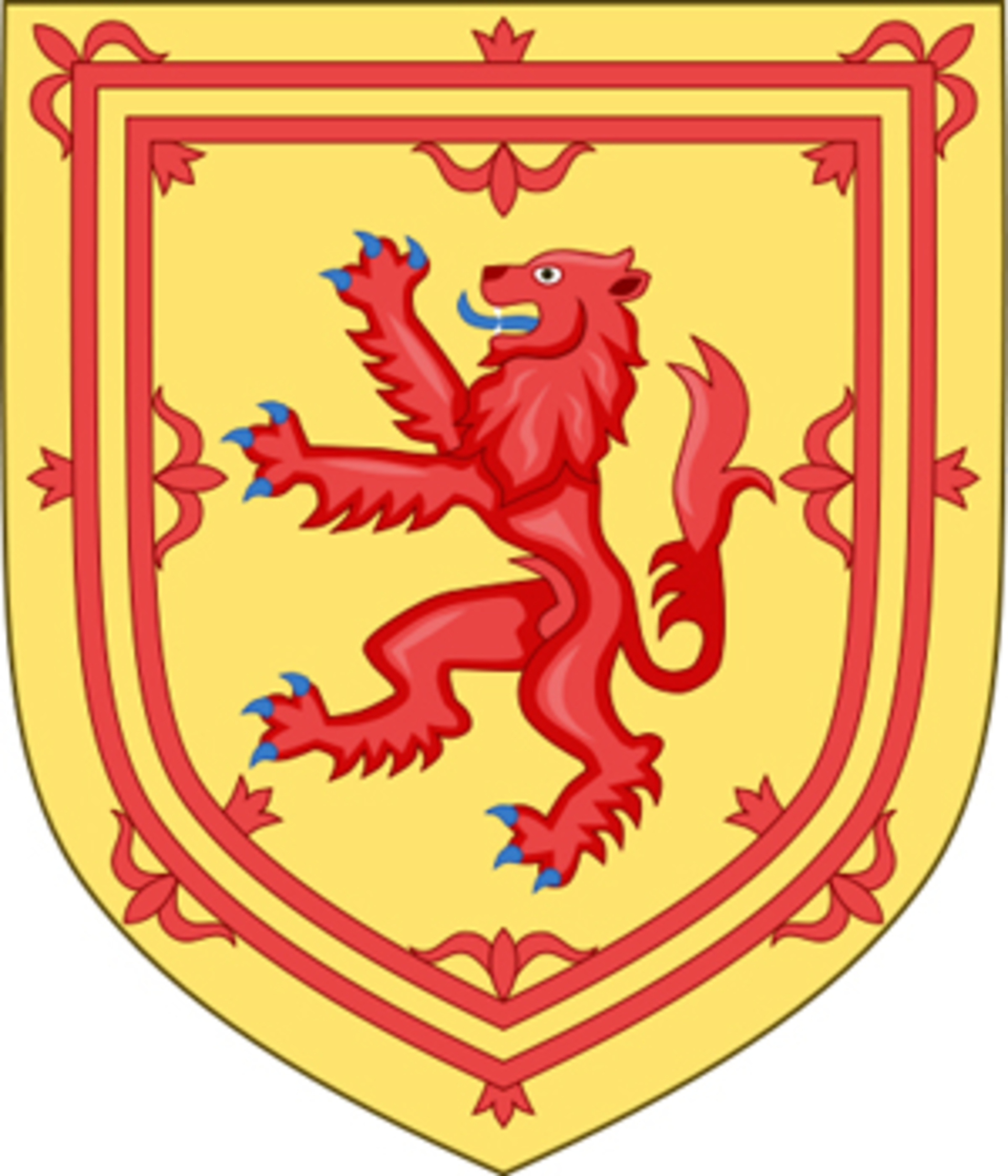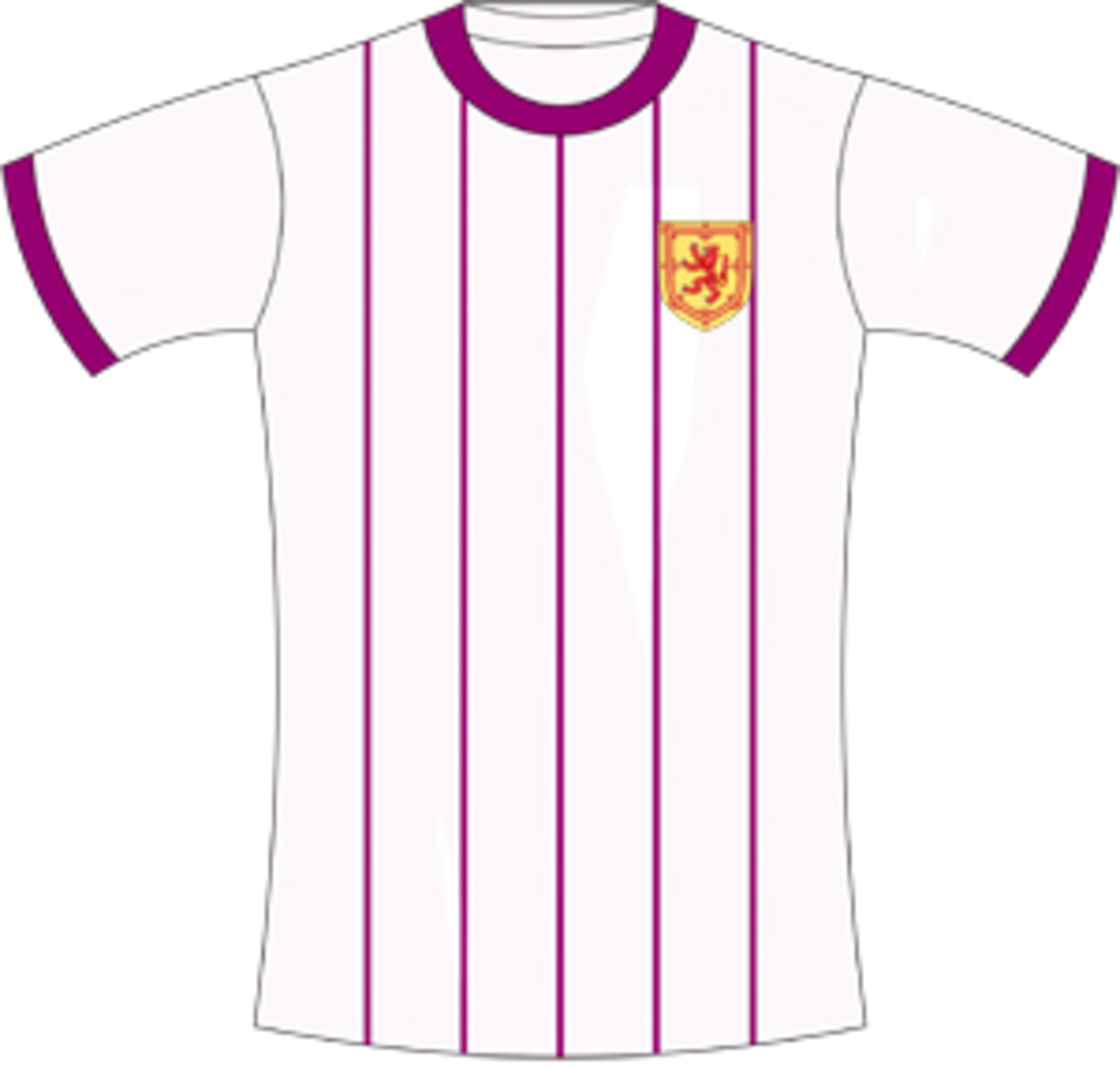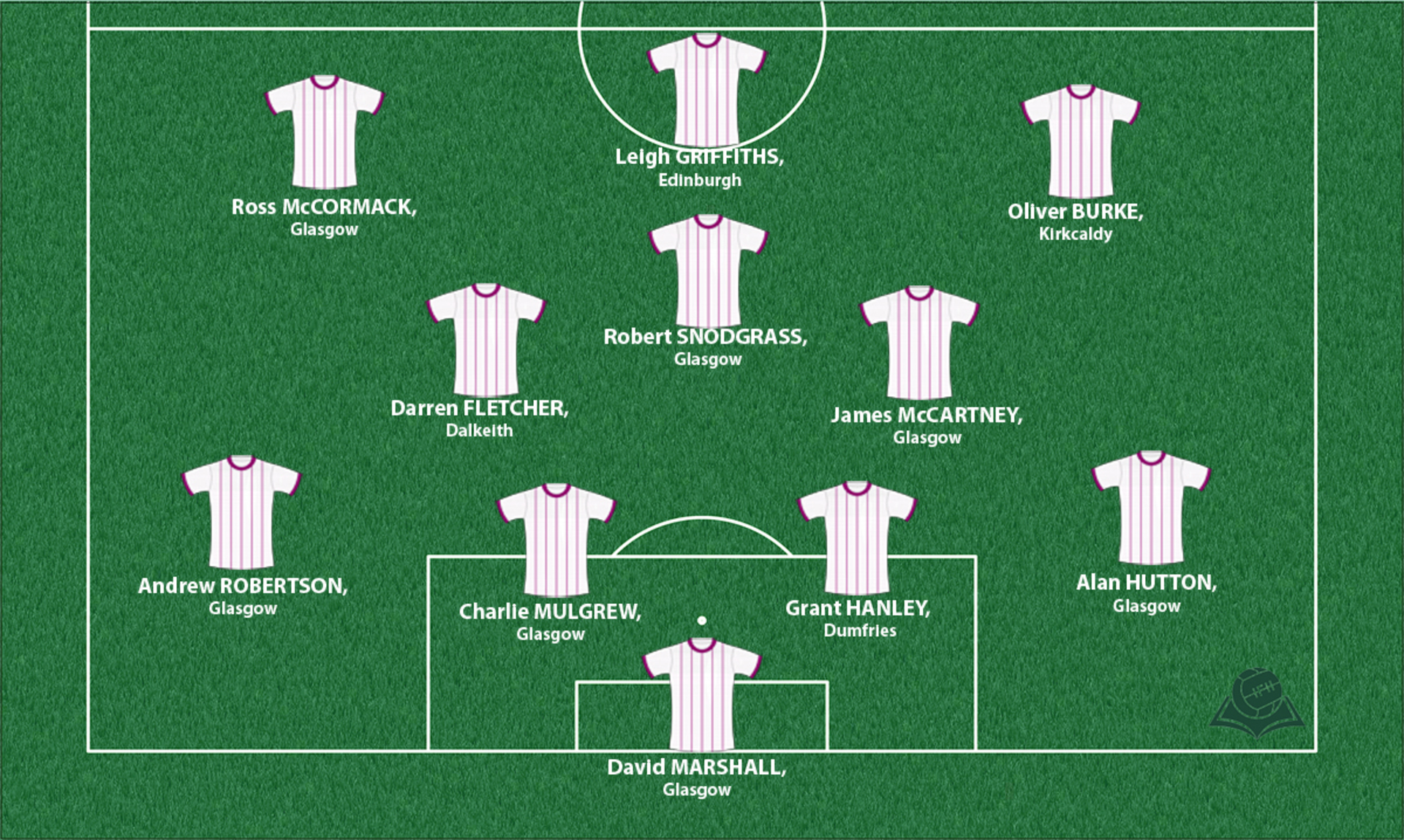The Kingdom of Scotland
In the period between the 11th and the 14th century the “Scottish” identity gained strength, in most part because of the constant English wars of conquest, but also because of the formation of a special Scottish Church. This led to the expression “Scotland” being used for all of the territories loyal to the king of the Scots.

Coat of arms

Shirt
| Position | First name | Last name | Mjesto rođenja | Like | Dislike | |
|---|---|---|---|---|---|---|
| GK | Alan | McGREGOR | Edinburgh |
1 |
0 |
|
| GK | Craig | GORDON | Edinburgh |
3 |
0 |
|
| GK | David | MARSHALL | Glasgow |
1 |
0 |
|
| DC | Grant | HANLEY | Dumfries |
2 |
0 |
|
| DC | Mark | REYNOLDS | Motherwell |
1 |
1 |
|
| DLC | Charlie | MULGREW | Glasgow |
2 |
0 |
|
| DLC | Stephen | KINGSLEY | Stirling |
0 |
0 |
|
| DRL/DMC | Steven | WHITTAKER | Edinburgh |
0 |
1 |
|
| DR | Alan | HUTTON | Glasgow |
2 |
0 |
|
| DL | Andrew | ROBERTSON | Glasgow |
19 |
0 |
|
| DL | Lee | WALLACE | Edinburgh |
0 |
0 |
|
| DL/ML | Barry | DOUGLAS | Glasgow |
0 |
0 |
|
| DMC | Darren | FLETCHER | Dalkeith |
3 |
0 |
|
| MC | Barry | BANNAN | Airdrie |
0 |
0 |
|
| MC | Charlie | ADAM | Dundee |
0 |
1 |
|
| MC | James | McCARTNEY | Glasgow |
1 |
0 |
|
| MC | James | McARTHUR | Glasgow |
1 |
0 |
|
| MC | Scott | BROWN | Dunfermline |
1 |
0 |
|
| MRLC | Graham | DORRAN | Glasgow |
0 |
0 |
|
| MRLC | Scott | ARFIELD | Livingston |
0 |
0 |
|
| AMLC | Stuart | ARMSTRONG | Inverness |
0 |
0 |
|
| MRL/DL | Ikechi | ANYA | Glasgow |
1 |
0 |
|
| AMRL | Aiden | McGEADY | Glasgow |
1 |
0 |
|
| AMRL | James | FORREST | Prestwick |
0 |
0 |
|
| AMRL | Oliver | BURKE | Kirkcaldy |
0 |
0 |
|
| AMRL | Robert | SNODGRASS | Glasgow |
1 |
0 |
|
| AMRL | Ryan | FRASER | Aberdeen |
0 |
0 |
|
| SS/AMRL | Steven | NAISMITH | Irvine |
0 |
0 |
|
| SS/FRLC | Ross | McCORMACK | Glasgow |
1 |
0 |
|
| FC | Leigh | GRIFFITHS | Edinburgh |
1 |
0 |
|
| FC | Stevie | MAY | Newburgh |
0 |
0 |
(Today part of: Scotland, northern part of England)
The kings of Scotland (Scotia) spread their rule from the middle Lowlands. Subsequently, king Macbeth (ruled 1040-1057) ruled over four completely different peoples, with different languages and customary rights – the Picts, Scots, Brits, and Angles, and his descendants will meet resistance while spreading their rule over this ethnic hybrid. Like England, Scotland was also a violent society in which blood feuds played an important role. In mid-13th century, an attack from the sea by the forces of the king of Norway who landed on the northern shore was stopped. This attack was where the legend about thistle and a barefoot Norse warrior whose cry had warned the Scots about the presence of an enemy army comes from, and why this flower was made a symbol of Scotland.
The early Scottish kingdom was of Celtic origin, but it started to become Anglicized by the end of the 13th century, when the royal administration, county life, and the Church modeled themselves according to the English prototype, and English was introduced into the court system. Nevertheless, political tradition and forms of social organization differed greatly in different parts of the country. For example, the Anglicized culture of Scottish Lowlands did not cross the border of the Highlands. The Highlanders living there retained their Celtic language, and the society remained organized in the form of tribes; one’s place in the society was determined by one’s relation to members of a clan, and not by wealth or heroic feats. With the Reformation in the 16th century, the cultural differences will become even more prominent. Scotland remained unconquered by the much more powerful England in the Middle Ages in great part because of the fact that a considerable part of English forces were for centuries occupied by wars in France or their own civil wars.
Sources
- Jeremy BLACK, Povijest Britanskih otoka, Zagreb, 2004.
- Felipe FERNANDEZ-ARMESTO, Narodi Europe, Zagreb, 1997.
- Adrian HASTINGS, Gradnja nacionaliteta , Rijeka, 2003.
- ''Thistle'', https://en.wikipedia.org/wiki/Thistle#Origin_as_a_symbol_of_Scotland
- Coat of Arms: https://commons.wikimedia.org/wiki/File:Royal_Arms_of_the_Kingdom_of_Scotland.svg
